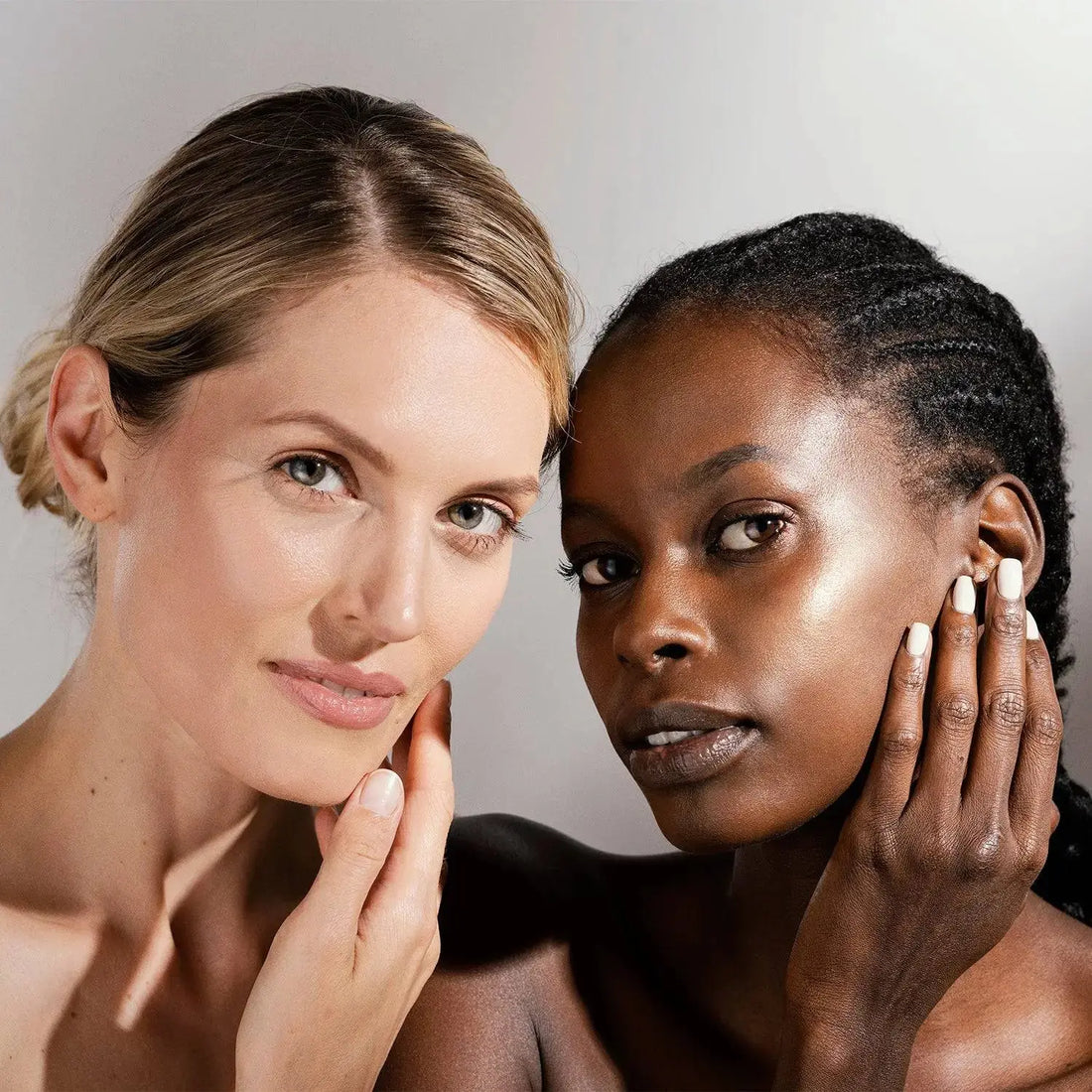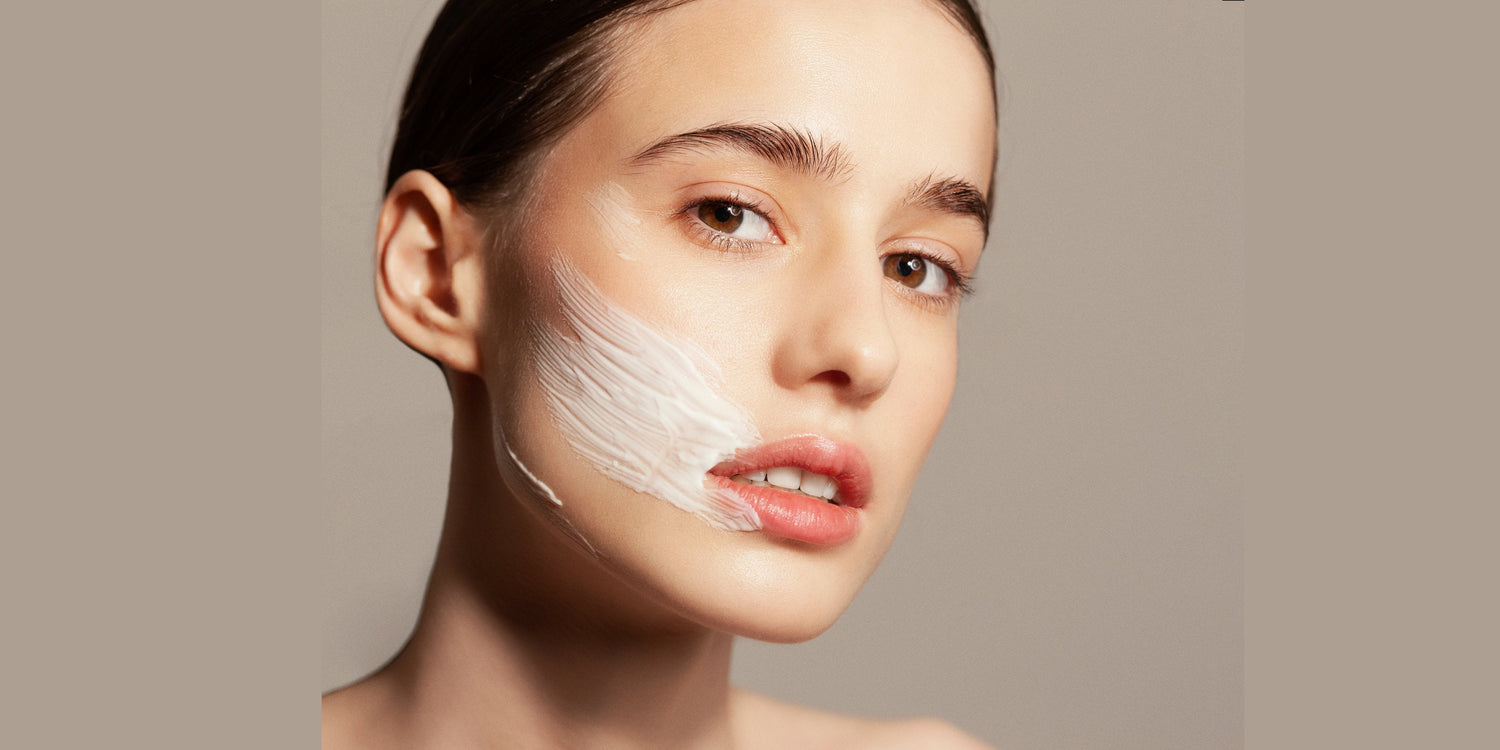
Understanding Sensitive and Sensitised Skin
For skin clinics and professional skincare providers, understanding the nuances of sensitive versus sensitised skin is essential.
With a rising number of clients presenting with compromised skin barriers, inflammation, and reactive responses, the ability to assess and treat these conditions with confidence is vital.
At Skin Virtue, we specialise in bioactive cosmeceutical formulations designed for even the most reactive skin types — without compromising performance. This educational deep dive is designed to support your clinical knowledge and improve treatment outcomes for clients with sensitivity.
Defining Sensitive vs Sensitised Skin
Sensitive Skin – A Genetic Predisposition
True sensitive skin is an inherited condition. It’s more common in fairer phototypes (Fitzpatrick I–III) and often presents from childhood. Clients with sensitive skin tend to have:
- A thinner stratum corneum
- Fewer natural lipids
- Heightened vascular responses
- Genetic predispositions to conditions such as rosacea, eczema, or dermatitis
This skin type reacts easily to external and internal triggers — even gentle products may cause discomfort or flare-ups.
Sensitised Skin – A Triggered Condition
By contrast, sensitised skin is acquired. It occurs when a previously normal skin barrier becomes impaired due to lifestyle, environmental exposure, incorrect skincare, or clinical treatments. Common causes include:
- Over-exfoliation (AHAs, BHAs, physical scrubs)
- Harsh cleansers or alcohol-based toners
- Environmental stress (pollution, UV, weather extremes)
- Stress and hormonal fluctuations
- Frequent barrier-disrupting professional procedures (peels, micro-needling)
Unlike genetically sensitive skin, sensitised skin can often be restored through proper barrier repair and clinical care.
Recognising the Signs in Clinic
Skin professionals must differentiate between the two to offer accurate care. Both sensitive and sensitised skin may show:
- Redness and flushing
- Tightness or burning sensation
- Flaking or rough texture
- Stinging when applying products
- Dilated capillaries or erythema
- Reactions to preservatives or allergens
However, sensitised skin typically shows recent onset and may be linked to a specific product or event, while sensitive skin shows a lifelong history of fragility.
The Role of the Skin Barrier
The epidermal barrier is our first line of defence — made up of lipids, corneocytes, and natural moisturising factors. In both sensitive and sensitised skin, this barrier is often:
- Compromised
- Lipid-deficient
- Dehydrated
- Inflammatory
A compromised barrier allows pathogens, allergens, and irritants to penetrate more easily, setting off inflammatory cascades. This is why barrier repair must always be the foundation of any clinical or retail strategy.
Key Ingredients for Barrier Repair
To support professional protocols, products must deliver bioactive ingredients with proven results on barrier resilience and skin sensitivity.
Recommended ingredients include:
- Niacinamide – Enhances barrier function, reduces redness, and supports ceramide production
- Squalane – A skin-identical lipid that restores moisture without clogging pores
- Panthenol – Deeply hydrates and promotes healing
- Ceramides – Rebuild lipid layers for stronger barrier integrity
- Peptides – Soothe inflammation and rebuild tissue resilience
- Hyaluronic Acid – Hydrates and plumps while reducing irritation
Skin Virtue’s Pure Nourish and Future Advanced collections are clinically developed with these actives in mind.
Clinical Protocols for Sensitive & Sensitised Skin
Step 1: Comprehensive Consultation
Gather a full client history, including:
- Product usage
- Environmental exposure
- Lifestyle factors (diet, stress, sleep)
- Clinical treatment history
- Skin behaviour in different climates or hormonal cycles
Step 2: Gentle Cleansing
Use a non-stripping, lipid-replenishing cleanser with allergen-free fragrance and barrier-friendly ingredients.
Recommended Product: Pure Nourish Cleanse – Enriched with moisture-binding agents and gentle surfactants.
Step 3: Hydration and Lipid Recovery
Follow with a barrier-replenishing moisturiser rich in lipids and anti-inflammatory actives.
Recommended Product: Pure Nourish Moisturising Cream – Clinically formulated to calm, protect, and hydrate.
Step 4: Protect and Fortify
Apply antioxidant-rich creams to shield from oxidative stress, pollution, and allergens.
Recommended Product: Pure Protect Pollution Defence – Strengthens the barrier while neutralising external aggressors.
Step 5: Limit Actives Initially
Avoid retinoids, strong acids, and essential oils. Introduce low-dose actives (like niacinamide and peptides) only after barrier repair is established.
Clinic & Salon Treatments – Dos and Don’ts
Avoid:
- Medium to deep chemical peels
- Dermaplaning
- Aggressive microdermabrasion
- High-percentage AHAs or BHAs
Consider:
- Red light LED therapy
- Oxygen infusion or cool misting
- Sheet masks with ceramides and anti-inflammatory peptides
- Enzyme-based exfoliation (e.g. lactic acid at low concentrations)
Skin Virtue Protocol Recommendation: Camera Ready Radiance Treatment Protocol – Delivers hydration, barrier support, and radiance without irritation.
Retail Guidance for At-Home Support
Consistency at home is crucial. Recommend a simplified regimen that includes:
- A low-foaming, allergen-free fragrance cleanser
- Lipid-rich moisturiser (e.g. Pure Nourish Moisturising Cream)
- Hydrating mist or essence
- Mineral-based sun protection
- A gentle serum for balance and clarity, like the Super Clear Clarifying Serum
Educating Clients on Skin Sensitivity
Education empowers compliance. Help your clients understand:
- Sensitised skin is reversible with consistent care
- Barrier repair is more urgent than exfoliation or anti-ageing
- A simplified routine is more effective than layering too many actives
- Sensitive skin requires patience, not aggressive treatments
Use metaphors like “brick wall” barrier or “invisible armour” to communicate effectively.
Skin Virtue’s Sensitive First Formulation Philosophy
Every Skin Virtue formula is built with sensitive skin in mind. Our approach:
- Prioritises dermatologist-supported, irritation-free actives
- Avoids known triggers and includes allergen-free fragrance only
- Delivers professional-grade efficacy without clinical aggression
- Ensures skin barrier support is the foundation for all outcomes
With three targeted collections — Super Clear, Pure Nourish, and Future Advanced — Skin Virtue provides tailored solutions for clinics treating problem-prone, ageing, or inflamed skin.
Conclusion: Sensitive Skin Needs Clinical Precision
Sensitive and sensitised skin are not interchangeable — and neither are their treatments. For clinics and salons, accurate diagnosis and tailored protocols lead to better results, higher client satisfaction, and fewer reactivity risks.
Skin Virtue empowers professionals with formulas that work in harmony with even the most reactive skin — so your clients can experience real results, without irritation.
Ready to deliver professional-grade care for sensitive skin?
- Become a Skin Virtue stockist: https://www.skinvirtue.com.au/pages/become-a-clinical-partner
- Explore the Pure Nourish and Future Advanced ranges: https://www.skinvirtue.com.au/collections/bestsellers


